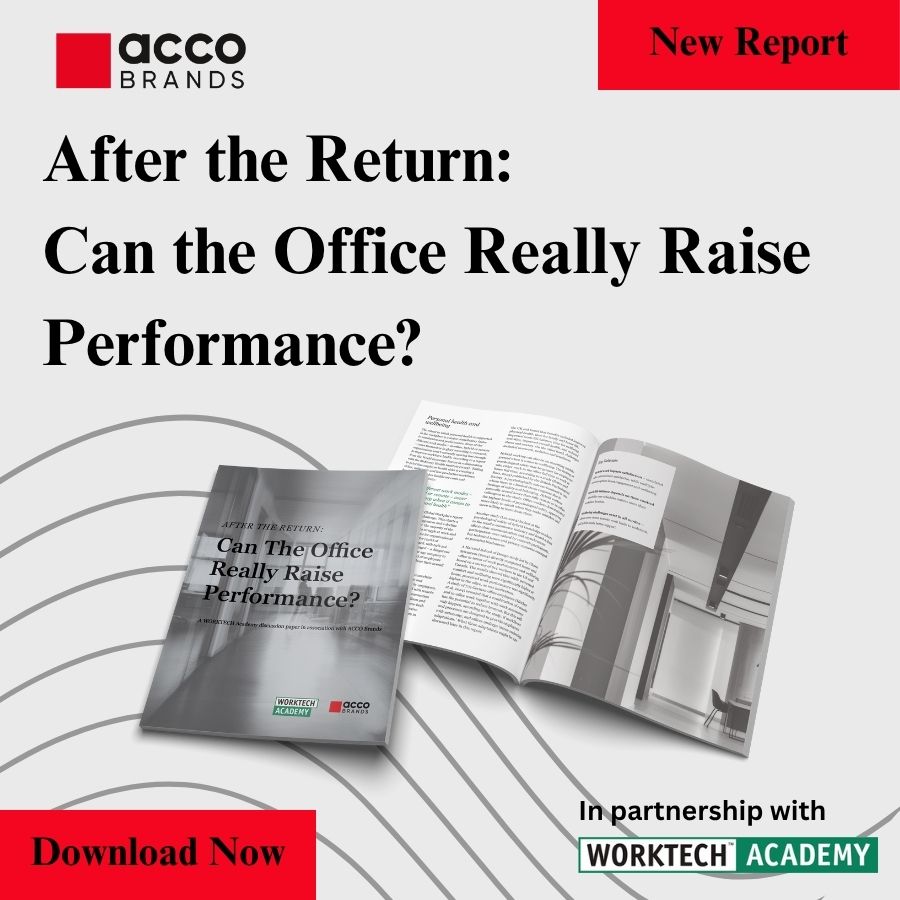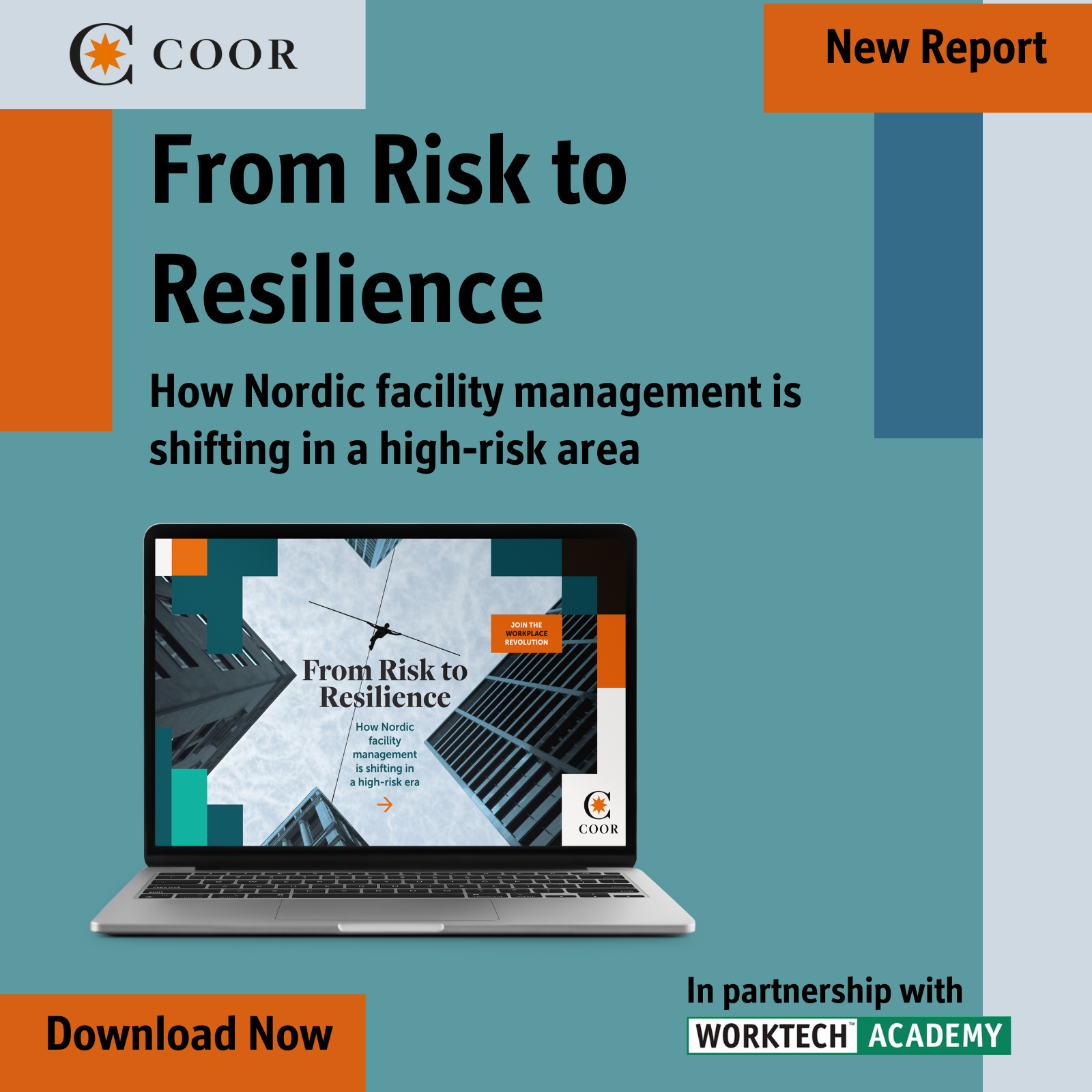Redefining performance: what are the new levers defining productivity?
New research reveals that the physical workplace, tech accessibility, and policy clarity are the deciding factors shaping performance at work today
The global conversation around productivity is shifting. Instead of debating whether people can be productive outside of the traditional office, the questions concerning organisations now are: what drives performance, and how can organisations design the right conditions for people to thrive?
A new global survey of 570 office workers across seven countries and eight industries, conducted by WORKTECH Academy in collaboration with SPS, uncovers the true enablers of performance in today’s workplace. The research identifies three drivers of productivity and engagement – environment, technology, and policy – that are reshaping how we understand and measure performance.
The power of presence
According to the survey, 93% of UK employees say their office environment is at least somewhat supportive of their productivity – the highest among all countries surveyed, with the global average at 89%. Globally, over half of respondents say their productivity has improved since 2020, with senior leaders particularly benefiting from better focus and fewer distractions.
Yet the picture is more complex for middle managers and early-career professionals. These groups are far more likely to report falling or plateaued productivity and disengagement. The survey findings indicate that a lack of clarity, too many meetings, and environments that don’t support their needs are the culprits for this.
Kate Lister of Global Workplace Analytics, and one of the expert contributors to the report, commented that, ‘People are coming back to spaces that don’t support what they do best – and they’re blaming the office.’
Environment matters more than ever
The survey shows a clear link between supportive environments and productivity. Employees who rate their workplace as highly supportive are twice as likely to say their productivity has improved since the pandemic.
Spaces that cater to different types of work such as focused, collaborative, social, are key. In fact, focus rooms were the highest rated space for supporting performance, while informal touchdown areas remain less supportive for productivity. However, the benefits are not felt equally: junior employees and the least engaged workers are more likely to perceive that they work in less supportive resourced environments that actively undermine their ability to work.
The financial and tech sectors lead the way, reporting both high engagement and supportive environments. In contrast, the legal sector is lagging behind, with lower productivity gains and more employees saying their workplace is inefficient.
Technology as a catalyst
While there’s no shortage of workplace tech tools, access and clarity around their use is uneven. Senior leaders are 34% more likely to use AI-powered tools than early-career professionals. Junior staff often report unclear guidance and greater anxiety about the impact of AI on their work.
Yet when used well, technology enhances focus, streamlines collaboration, and boosts engagement. Nearly half of the most engaged employees regularly use AI scheduling and workflow automation tools, compared to just 18% of the least engaged.
Geography also plays a role. In Hong Kong and Singapore – where AI policies are clearer and digital tools more integrated – employees report higher productivity and confidence in using tech. In contrast, workers in Germany and the US report the highest levels of AI anxiety.
Policy needs clarity
Flexible work policies have been rolled out in many companies, but they’re often poorly communicated or inconsistently applied. This is breeding mistrust, confusion, and missed opportunities for performance.
Employees who feel they lack autonomy or clarity about hybrid work policies are more likely to report declining productivity. This is also true for unclear policies around technology tools such as AI. The research found that 44% of those with lower productivity levels said their organisation had no clear policy around AI use.
As Kursty Groves, workplace strategist and author, and expert contributor to the research, commented: ‘Flexible work policies are only as effective as their communication. The challenge is translating policy into lived behaviours.’
The Performance Triangle
The report concludes by offering a new framework: the Performance Triangle. It identifies three interconnected pillars: environment, technology, and policy. These pillars are critical considerations for performance at work.
High-performing environments are flexible, purposeful, and human-centred. Technology must be accessible, intuitive, and embedded into workflows. And policies must be transparent, equitable, and empowering.
As the age of AI continues to unfold, this holistic approach to workplace design, digital enablement, and cultural alignment will separate high-performing organisations from the rest.
Read the full report here.








